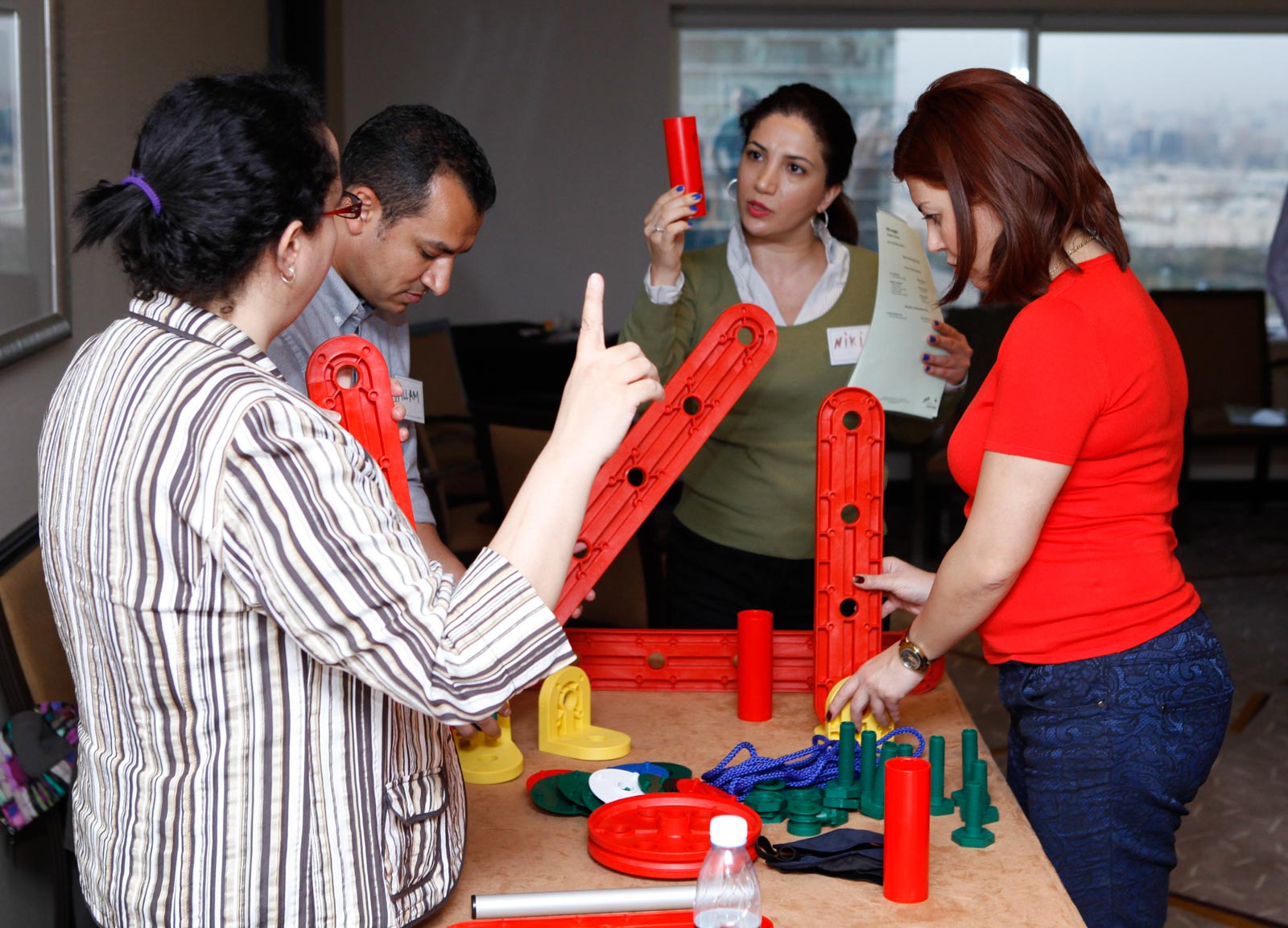Bring Myers-Briggs personality types to life with MTa experiential activities
Part of our series on bringing theories to life with experiential learning. Read the rest here.
The Myers-Briggs Type Indicator (MBTI) is a popular tool for organisations looking to help their employees understand their personality profiles and how they impact their work.
In this blog post we’ll share four experiential learning activities that are ideal for bringing MBTI types to life. These activities allow multiple roles to come to the fore, giving participants the opportunity to demonstrate a wide range of behaviours which can be reviewed and tied back to MBTI profiles.
So, if you want to help participants understand how their MBTI profiles help or hinder their workplace performance, and to lay the groundwork for lasting behavioural change, read on.
Here’s what we’ll cover:
- A quick intro to Myers-Briggs and its results
- Using MTa materials to bring personality types to life
What is the Myers-Briggs Type Indicator?
The Myers-Briggs Type Indicator is a personality assessment tool that provides individuals with a framework to discover and understand the personality profiles of themselves and others.
The MBTI was developed as a way to help people improve their communication, strengthen workplace relationships, achieve better workplace performance, and more.
MBTI results are coded strings of four letters, for example ENTJ or ISFJ. Each letter indicates a person’s preference on a dichotomy, each of which comprises two traits as follows:
- Extraversion (E) vs Introversion (I): whether a person is inwardly or outwardly focused. Extraversion suggests an outward focus and a preference by social interaction; introversion suggests an inward focus and a preference for solitary activities.
- Sensing (S) vs Intuition (N): how a person prefers to take in information. Sensing suggests a preference for tangible details; intuition suggests a preference for abstract, theoretical concepts.
- Thinking (T) vs Feeling (F): how a person prefers to make their decisions. Thinking suggests a preference for logic and rationality; feeling suggests a preference for emotions and empathy.
- Judging (J) vs Perceiving (P): how a person prefers to live their outer life. Judging suggests organisation and structure; perceiving suggests flexibility and adaptability.
It’s worth noting that a higher score does not mean you are that thing: i.e, a person with E in their MBTI type isn’t “an extrovert” – they just demonstrate a higher preference for extroversion relative to introversion.
On completion of the MBTI, a participant is given one of the following sixteen codes:
- ISTJ – Introverted, Sensing, Thinking, Judging
- ISFJ – Introverted, Sensing, Feeling, Judging
- INFJ – Introverted, Intuitive, Feeling, Judging
- INTJ – Introverted, Intuitive, Thinking, Judging
- ISTP – Introverted, Sensing, Thinking, Perceiving
- ISFP – Introverted, Sensing, Feeling, Perceiving
- INFP – Introverted, Intuitive, Feeling, Perceiving
- INTP – Introverted, Intuitive, Thinking, Perceiving
- ESTP – Extraverted, Sensing, Thinking, Perceiving
- ESFP – Extraverted, Sensing, Feeling, Perceiving
- ENFP – Extraverted, Intuitive, Feeling, Perceiving
- ENTP – Extraverted, Intuitive, Thinking, Perceiving
- ESTJ – Extraverted, Sensing, Thinking, Judging
- ESFJ – Extraverted, Sensing, Feeling, Judging
- ENFJ – Extraverted, Intuitive, Feeling, Judging
- ENTJ – Extraverted, Intuitive, Thinking, Judging
The image below outlines personality traits associated with each of the possible codes, along with the four dichotomies:
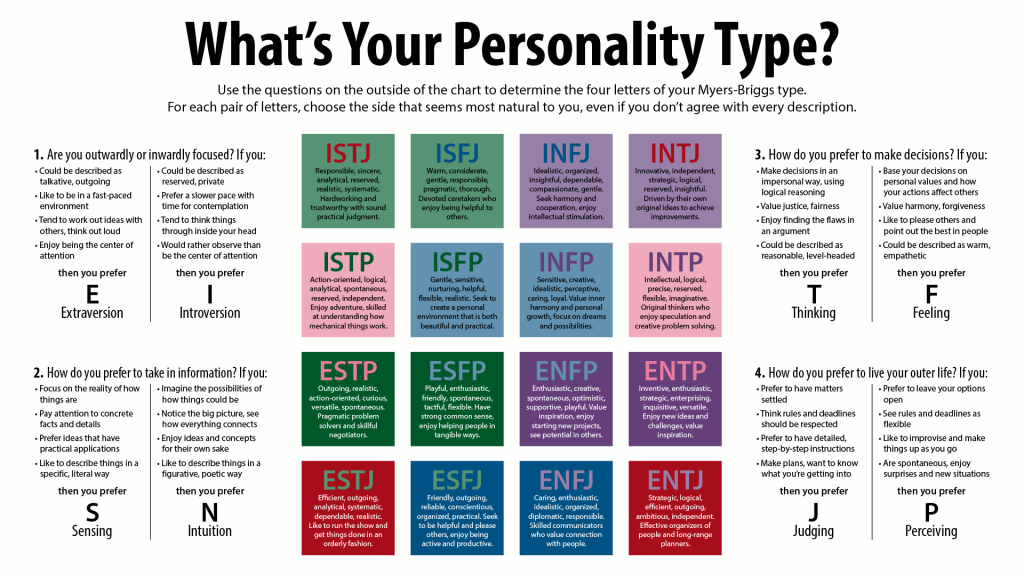
Taking the Myers-Briggs Type Indicator further
While the MBTI is great for giving individuals the tools to better understand themselves and others, building on this understanding is an important step in translating MBTI results to lasting behavioural change.
Equipped with an MBTI type, participants who are invited to consider how their type influences their behaviour and interactions stand in good stead to identify areas they’d like to change, and work towards that change.
To help participants achieve the benefits outlined earlier, a facilitator needs to use experiential learning activities to create scenarios where behaviours can be put into practice.
Using MTa materials to bring Myers-Briggs to life
Each of our kits contains a selection of experiential learning activities designed to simulate real-world scenarios, to allow participants to observe, consider, discuss and build on their behaviours in a controlled environment.
Building on MBTI profiles requires broad activities with multiple roles, tasks and priorities. This type of activity lends itself well to participants demonstrating a wide range of behaviours, which can then be clearly linked back to theoretical profiles during the review stage.
Over the Bridge, from MTa Team Kit
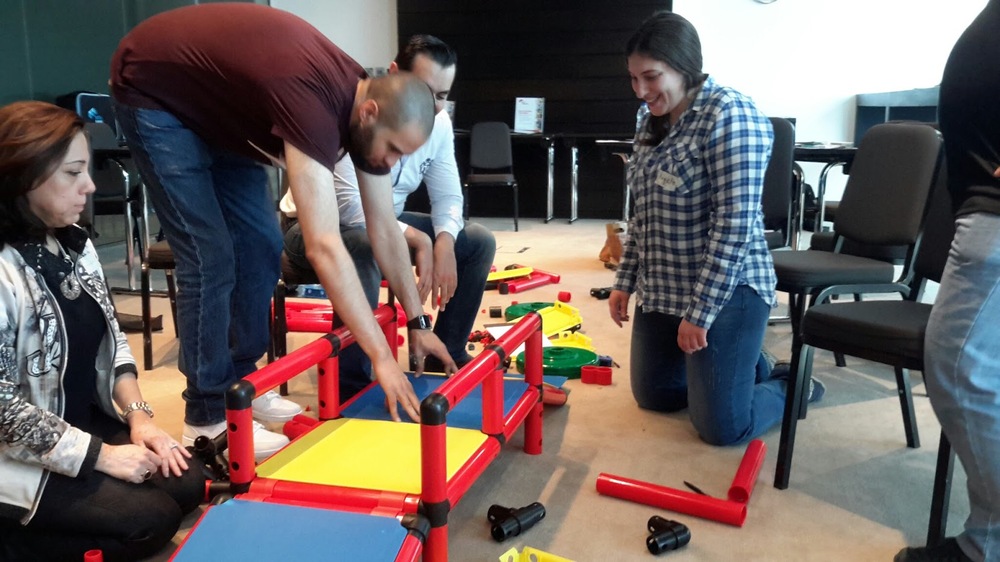
This activity demands participants employ a wide range of skills and behaviours, and takes long enough that different personal characteristics have a chance to shine through.
There is lots to do, and this creates a scenario where people take on roles that suit them and their personal style.
The activity brief is ambiguous and open to interpretation: another opportunity for people with different styles to respond in different ways.
Each of these factors creates the opportunity for detailed review of behaviours, and conversation about how these behaviours tie back to MBTI.
Container Freight, from MTa Insights
This is a more complex activity with strong numerical elements that is particularly good for bringing out analytical and logical behaviours.
The activity invites creative solutions, and demands good planning which some participants will feel comfortable with, while others will prefer to just get started.
Time pressures invite different behavioural approaches, and conflict may arise as these approaches are suggested and embarked upon.
The Rig, from MTa MINI
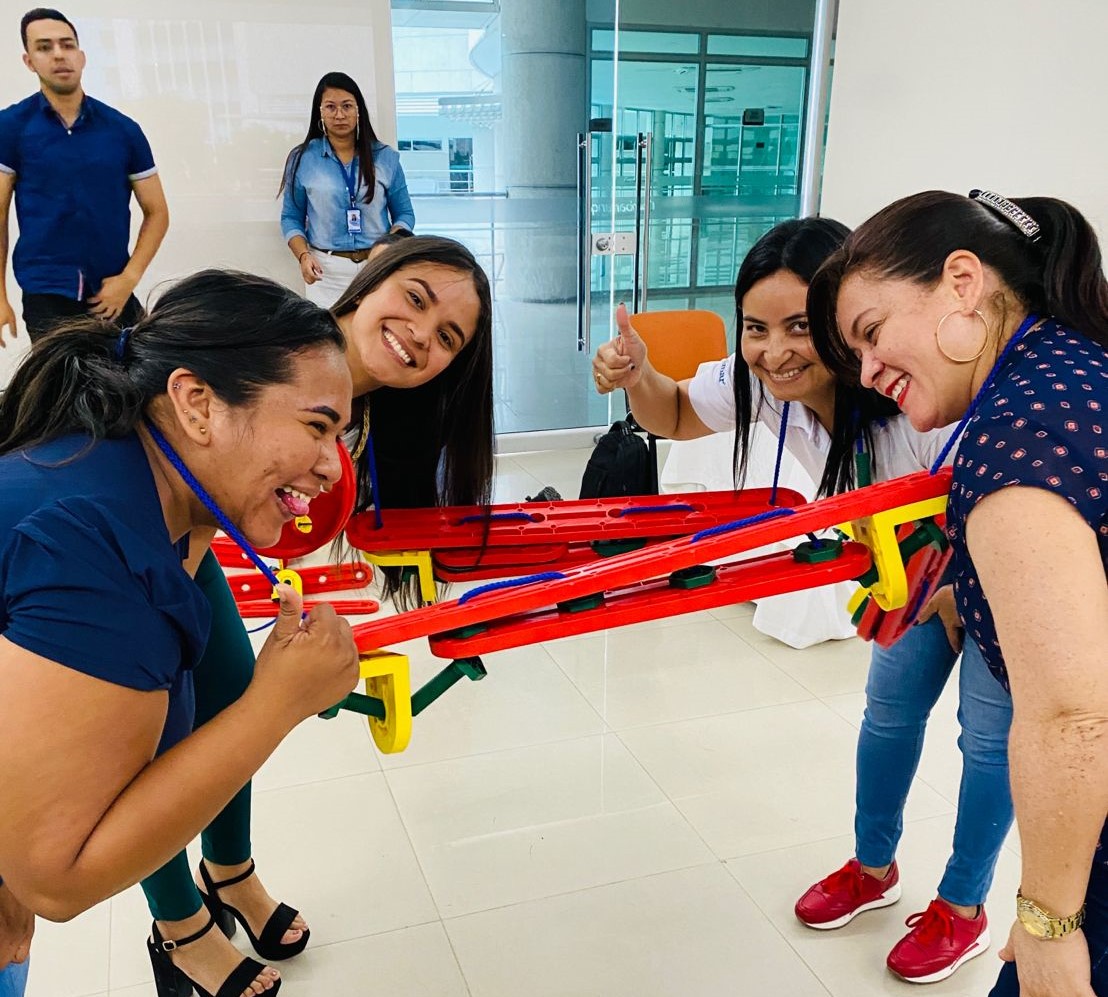
This team sees three subteams across three locations working to complete a complex project comprising multiple tasks.
With so much to do, many different behaviours are likely to make an appearance, giving plenty of opportunities for review and linking of behaviours back to the MBTI profiles.
MTa New Dimensions
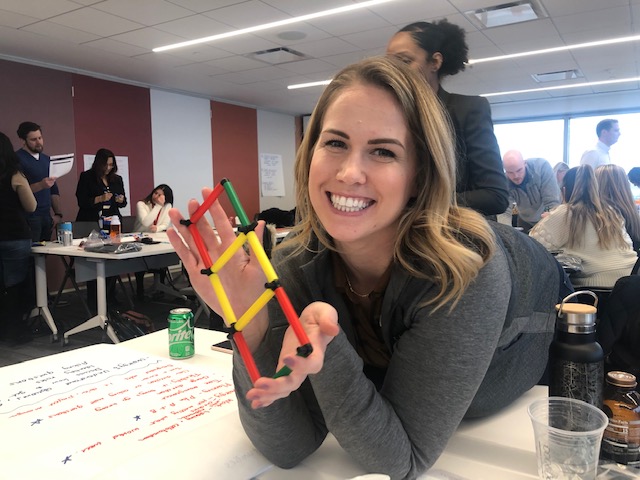
This is a multifaceted activity that’s particularly well suited to exploring the Extrovert – Introvert dichotomy.
There are opportunities to collaborate with other teams and participants, or to do your own thing. There are also opportunities to be creative, to plan and hit deadlines, and various other factors that invite different profile types to make an appearance.
The activity objectives can be interpreted literally or in an abstract sense, giving participants the chance to explore the Sensing – Intuition dichotomy as well.
Let us help you
With more than a hundred activities across our range of kits, MTa materials are suitable for just about any learning outcome you can think of.
If you want to help teams build on their Myers-Briggs results, or if you need help meeting any other learning objectives, get in touch with our experiential learning experts and we’ll be happy to help you find the right activity for your needs.

